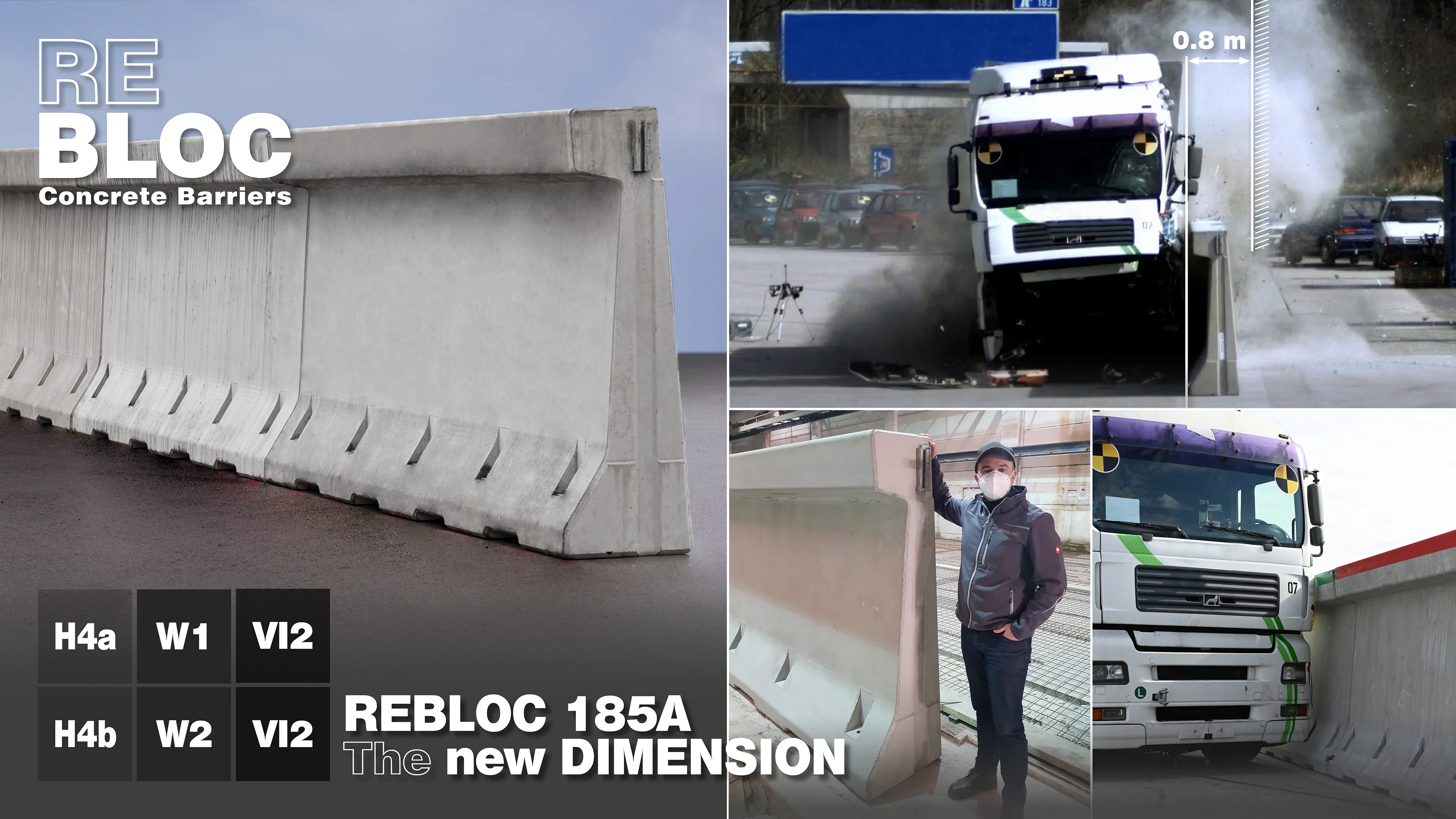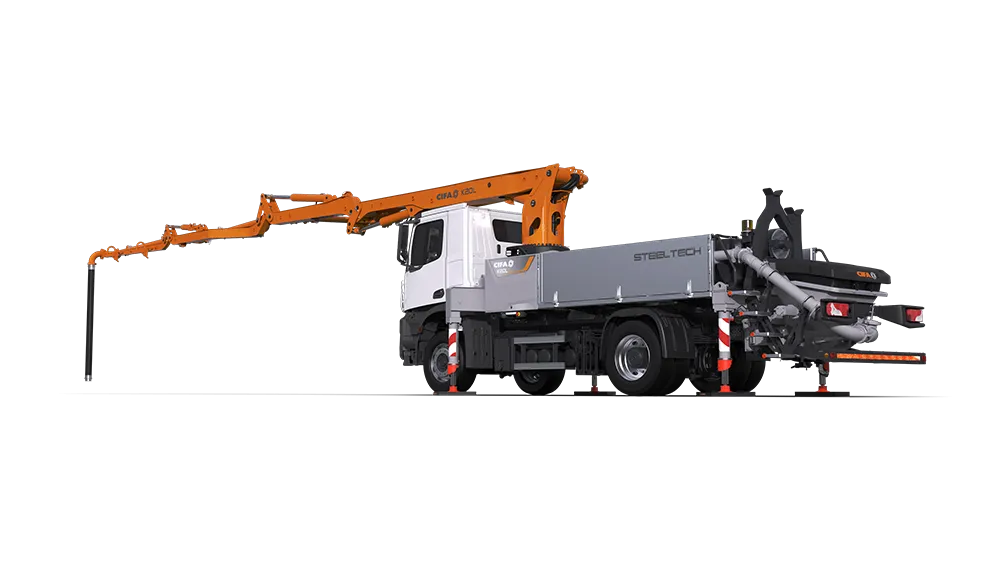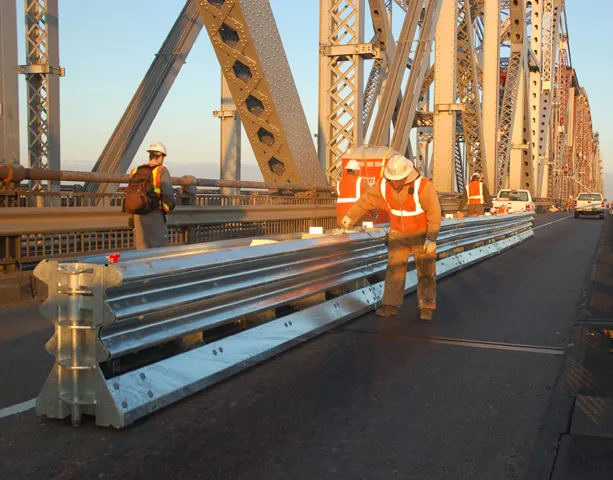
Rebloc with its local partner De Bonte Group provides in this context an innovative solution of free-standing concrete safety barriers with integrated noise barrier panels for the Oosterweel Link – Right Bank R1 – E19 project in Belgium, which is one of the largest road infrastructure projects in Belgium.
Commissioned by TM ROCO, an association of Belgian construction companies and managed by LANTIS established by the Flemish government to ensure the smooth running of the Oosterweel works.
1,3 km length and 5.300 square meters of REBLOC NBL100X_400_5 system have been installed between end of May and mid of June 2022 as temporary application during the construction works.
An innovation being used to create a smoother, safer, greener and healthier Antwerp region .
The construction of a conventional noise barrier is often complicated by various ground installations (cables, drainage, pipes, etc.)
REBLOC offers innovative solutions of free-standing concrete safety barriers with integrated noise barrier panels. These combined safety barriers are comprehensively tested according to EN 1317-2 and thus meet the required safety and quality standards.
Our noise barrier is tested for noise protection in accordance with EN 1793. This space-saving system offers solutions for containment levels H2 and H4b for total heights from 2m to 6m and above at a very slim overall width.
Thanks to this combined system, the noise barrier can be placed closer to the noise source, resulting in reduced height or an improved noise protection effect.
Due to their modular design, various highly absorbent panels made of wood-concrete, aluminum or acrylic glass can be combined, resulting in numerous architectural design options.
REBLOC‘s space-saving systems leave more room for traffic lanes. The noise barrier can be moved quickly and easily - a great advantage for temporary application or when future changes are planned (e.g. widening of the road cross-section).
Essential advantages of the REBLOC noise barrier:
- Quick and easy planning
- No additional space required, as safety barrier and noise barrier system are combined into a single element
- Free-standing on compacted gravel or asphalt/concrete
- No intervention in the subsoil required
- Additional land purchase not necessary in many cases
- Lower height of the noise barrier is needed compared to conventional once
- Temporary use (e.g. during the construction period) is easily possible
- Very fast installation possible because of prefabrication of all parts
Content produced in association with Rebloc









